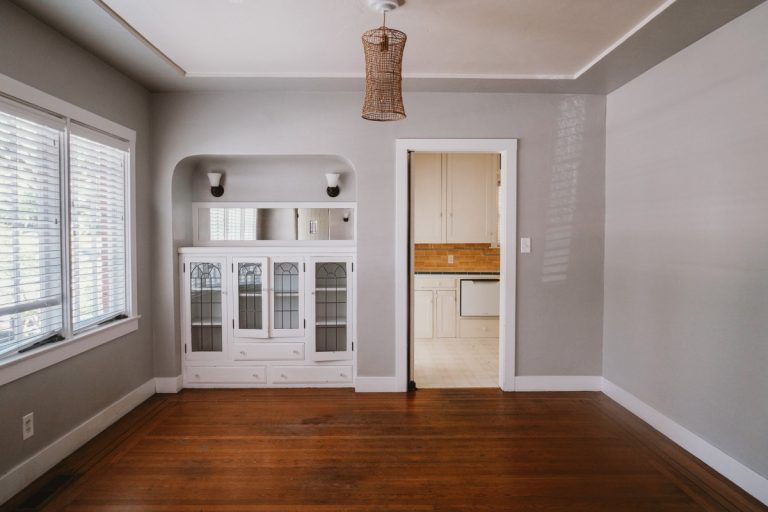Hacks for Storing Items During a Renovation
A fast growing number of homeowners are considering renovating their homes instead of relocating. Remodeling a home is fun and exciting – because the remodeling process promises a new home and enables you to realize your dreams. However, renovating a home is a daunting procedure that might oblige you to camp out in a single spare room, such as a makeshift kitchen or bedroom.
Hire a Reliable Storage Firm
It is important to consider stashing your belongings in storage so as to accelerate your home renovation. Make sure to pick a company you can fully trust to provide the utmost security for your stuff
Designate an Empty Space for Storage
If there is a space in your home that you do not use often – such as a vacant corner of the basement or a guest room – it can make an excellent solution for storing items during the remodeling process. Keep in mind it will only be used temporarily until the remodeling project is done, so you don’t have to worry about giving up that space in your home forever. Designating an empty space for storage is the most cost-effective solution as far as remodeling a home is concerned.
Rent a Portable Container
A complete home remodel might call for renting a portable storage solution that allows you to get all your stuff out of the way while keeping it on site. Renting a portable storage container paves the way for easier remodeling, especially if the container in question can accommodate loads of boxes, furniture, as well as any other bulky stuff in your house. Portable storage containers provide a perfect way to store all your items in a safe or secure location until the remodel is complete.
Create an Inventory of Your Items
This might seem like an extra work, but creating a detailed inventory of your belongings can ensure all items are accounted for during the renovation process. Creating a detailed inventory can also prove useful when it comes to relocating your items to their new home.

Things To Know Before Starting A Home Renovation
Your Timeline Is Important.
One of the first things Travis did when putting together the renovation scope of work was to create a timeline. It’s a timeline that outlines what gets done when (his dad is a home builder so we had some confirmation) and the order of work. For example, rewiring the electrical should happen before plaster because they need to open walls to access certain areas, and painting should be done before flooring and scheduled towards the very end. If you plan on managing the project yourself, having the ordering and timing in place before you start will make it a lot easier to have flow and a checklist that isn’t overwhelming.
Whatever Your Budget Is, Double It (For The Most Part).
If you asked us what our budget was in April, it would have been half of what it is today. The budget isn’t always doubled, but with older homes you often find “surprises” when pulling back the layers. In our case, there have been a few necessary safety upgrades in electrical and plumbing which are the two most expensive categories in a home. As we got deeper into things, we also decided to update the bathtub, toilet, and opted for a nicer kitchen sink. Combine this with a few other factors, it’s good to always have some breathing room in the budget.
Having Word-Of-Mouth Referrals Is Important.
One of the key parts of this renovation was asking friends and neighbors for referrals. All of our subs have come recommended from someone we know personally. If you’re thinking of updating your house, I’d start by asking around for the best electrician or plumber, as they’ll be the first people you want to schedule
You Can Source Everything Online.
Thank the heavens for the internet. We bought our sink, our tub, the lighting, the drain, and every other piece you can imagine online. Yes, we went into a few stores to have an idea of what we wanted but let me tell you, the internet is king. Sites like Wayfair, Houzz, and Amazon have so much available online (and often at a better price!).
You Can Save A Ton Of Money By Doing What You Can On Your Own.
Our biggest save: doing the work ourselves. Travis has spearheaded this project like none other, spending weekends learning how to remove tile and plaster walls. If you have the time, I’d recommend doing as much of the less-technical work as possible. It’s a big money saver and allows you to allocate some of those savings to hiring professionals for the highly-skilled pieces (electrical, plumbing, tile, etc).
Best Renovation Websites For Living Out Your Dream Home Fantasies
viewer knows that renovating is far easier said than done. That doesn’t stop any of us from mentally making a few changes to our homes — whether we own them or not — even though we don’t intend to hire a contractor anytime soon. Or, perhaps a renovation is actually within reach, but you’re not pleased with the generic inspiration found at your local home superstore
Remodelista
Best for: Plotting your new, high-end dream home. Though the site has broadened its mission away from simply providing remodeling ideas (who would of thought?), you can still find great images waiting to be added to your “Dream Life” pinboard.
DIY Network
Best for: Finding practical advice and finding projects by budget. The network that brought you multiple Vanilla Ice-pegged reality shows has an exhaustive website that borders on overwhelming at times — but they know their stuff.
This Old House
Best for: Fantasizing about a simpler, self-reliant life in a meticulously restored Victorian that was once nearly uninhabitable. It’s specific, but you know what we mean. We imagine the editors finding their bliss at salvage yards, or trading recommendations about screwdrivers all while turning an old found door into a stately table. And we look up to them for that.
Remodelaholic
Best for: Seeing how a real family renovated (and continues to renovate) on a tight budget. While the blog can be a little wonky at times, the content is good.
When and Where to Buy Home Renovation Materials
I worked for a roofing company in college, and my boss liked to tell the story of a material mishap he suffered shortly after starting his business. He’d been working hard installing a new asphalt roof for a customer who was away on business. There he was putting down the final shingles when she pulled up to the house. “It looks nice,” she shouted from the driveway. “But it’s the wrong color.”
That lesson has stuck with me all these years, along with the implied importance of getting material orders right on a remodeling project. Recently, the Consumer Reports National Research Center surveyed general contractors about the mistakes that lead to the biggest delays and cost overruns on a project. On their list of culprits, materials arriving broken or different from what was ordered was second only to existing structural damage.
Settle on a Style
If you plan to buy your own home renovation materials, you really need to know your style. My wife and I spent hours on sites such as Houzz, Pinterest, and Remodelista, creating a digital ideabook of photos to help pinpoint our design preferences. Our tastes skew traditional, with a few modern flourishes here and there, so we fall in the so-called transitional camp of home design.
Rules to Showroom Success
You do get more handholding from the staff members at a dedicated kitchen and bath showroom, many of whom are certified designers. But as I learned, there are still steps you can take to make the process go smoothly.
Make an Appointment
You can usually walk into a showroom off the street, but you’ll save time by making an appointment. If you know people who have worked with the showroom in the past, find out who the best designer on staff is and set up your meeting with him or her.
Don’t Rush the Process
If it’s a major project—a full kitchen or master bathroom remodel, for example—plan to spend several hours in the showroom. There are hundreds, if not thousands of products to sort through, and you need them to coordinate. That takes time and patience—and probably even a follow-up visit.
Bring Your Ideabook and Floor Plans
The inspirational photos will help the designer home in on your style more quickly. The floor plans will provide all of the necessary specifications. That is especially important with bathroom projects, because tubs, vanities, and sinks come in a wide range of sizes.
Know Where to Save and Where to Splurge
Set your priorities going in. For example, tile can get crazy expensive, but we knew that a simple 4-inch subway tile in a white gloss finish would create the classic look we want for the bathrooms. That gave us more spending power on the master bathroom vanity, a nice double-bowl unit from La Cava with basins made of porcelain, a material that performs well in CR’s bathroom sink ratings. Instead of the stainless steel console, we opted for a white custom vanity to provide more storage in the bathroom.
Think About Secondhand
If you’re up for the hunt, there are some seriously first-rate products on the secondhand market. We visited Green Demolitions. where a 43,000-square-foot showroom is filled with luxury products salvaged from high-end homes. Go to for the latest finds (wares can be shipped anywhere in the country) or try your luck at the local salvage shop in your area.

Home renovations that are worth the cost
Homeowners often spend a lot of money on renovations expecting to recoup more than they likely will. But some projects offer better returns than others.
“It is important to make investments that will be the best use of your money,” said. “We don’t want to put in custom details that are only for your specific use. Think about things that will be valued by a range of people.
With a full kitchen renovation, homeowners can recoup about 59% of the cost, and a new master suite will typically return 50%, according to a study from the the National Association of Realtors and the National Association of the Remodeling Industry. But the highest returns come from less flashy projects.
Installing hardwood flooring, for instance, will get you back even more money than you put into it, returning about 106% of your cost. Replacing the HVAC — or heating and cooling system — will recover 85% of its cost, while an insulation upgrade will recoup 84%.
Highland has a five-bedroom, two-story, brick Colonial on the market that, having been “lived in hard” by a family for 21 years, would list around $250,000. The owner was willing to do $50,000 in renovations, including a new kitchen, updated bathrooms and new flooring throughout. After the renovations were done, the home was listed at $415,000 and is now in contract.